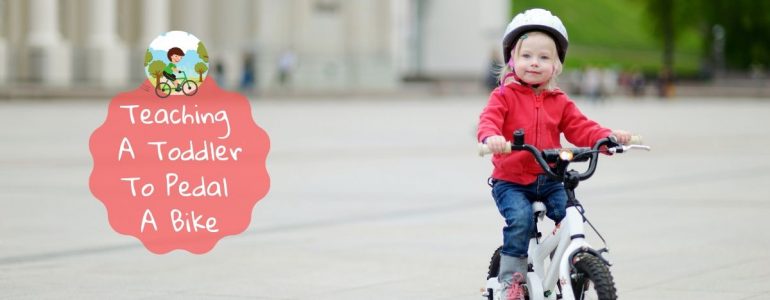Teaching a toddler to peddle can be a test of patience. Not all toddlers learn to pedal and balance at the same speed; some take longer while others seem to master it after just a few wobbly rides.
It’s important to understand your child’s physical abilities as well as their fears. Encourage them to keep trying and be patient.
It also helps to know a few tricks to help them learn faster. Here are the best tips we know on how to teach a toddler to pedal a bike.
1. The size and type of the bike matters
You’ll want to find a bike that has a child-friendly design and features. There may be some differences between boys’ and girls’ bikes too.
For example, a geared bike is probably not a good idea as it may be too complex for a child to handle.
Make sure the bike’s handlebars are easy to grip and at the right height, the pedals small enough for their feet and the saddle comfortable for them.
More importantly, the bike should be the right size for their height. Most parents choose a child’s bike based on age and wheel size. Use the inside leg measurement instead (sometimes called the stand over height). It’s more accurate and ensures the bike is the right size for your child.
Your child’s bike should allow their feet to touch the ground when they’re seated. This gives them more control and confidence when pedalling.
Keep in mind that a bike that’s too big for your child will also be too heavy for them. They’ll find it harder to pedal and can be dangerous.
A good bike should fit your child age and height. Your child shouldn’t grow into it.
2. Safety first
When they know they are safe and less likely to get hurt, your child will be more confident and learn faster.
Have your child wear a helmet at all times when riding. It’s very important! Here are some additional tips regarding helmets and other safety equipment.
- Make sure the helmet fits your toddler well. A good helmet should cover your child’s forehead. Confirm that the helmet straps are fastened correctly
- Ensure your child is not wearing a hat under the helmet
- Always replace a damaged helmet. If it is faulty it will not protect them as well.
- You can add safety reflective stickers to your child’s helmet for easier visibility.
- Knee and elbow pads may be also a good idea.
Keep your child’s bike in good repair. Be sure to inspect it often and oil the moving parts to avoid accidents. Regularly check the brakes, tire pressure, and chain to make sure they are in good condition.
3. Familiarise
The speed at which your child will learn to pedal depends a lot on their level of confidence. Start with basic skills to slowly build up their confidence.
You can start by explaining parts of a bike and what each part does. Then teach them how start and stop.
They should know how to place their feet on the pedals when beginning to ride and how to brake.
Of course, you can go directly to pedalling if your child has been using a balance bike. They are already confident on a bike and pedalling will be easy to master.
4. Develop proper coordination and motor skills
One trick to teach your child to pedal a bike is to have them simulate pedalling while lying on the floor.
Lie on the floor yourself and pedal then ask them to copy you. You can also place your hands on the bottom of their feet so that they can pretend they are pushing on pedals. Kids love a good game especially when it means sleeping on the floor. Use that to teach them the basics of pedalling.
Another game is to have them sit on a chair and pretend they are pedalling. Place your hands under their feet to act like pedals.
Once they practice on the floor or chair, have them replicate the pedalling motions on the bike. Make sure the bike is on a flat surface away from traffic.
If the bike has stabilisers, have them try pedalling on their own. If it doesn’t, hold the bike so they don’t fall.
Remember to start slow and be patient with your child. Give them an occasional push and guide them while still holding the bike.
To improve their eye coordination, ask your child to look at a certain object in front of them when pedalling. This will reduce wobbling and improve steering.
When you feel your toddler is ready to ride alone, encourage them by staying close behind them.
5. Incorporate games
To engage and motivate your toddler, make the activity fun. An easy way to do this is incorporating games in the learning process. Maybe promise a reward if they pedal a certain distance.
Another trick is to turn learning into playtime. To make it more fun, invite one or two other kids. Having your child ride with other kids can also help them gain confidence and learn faster.




